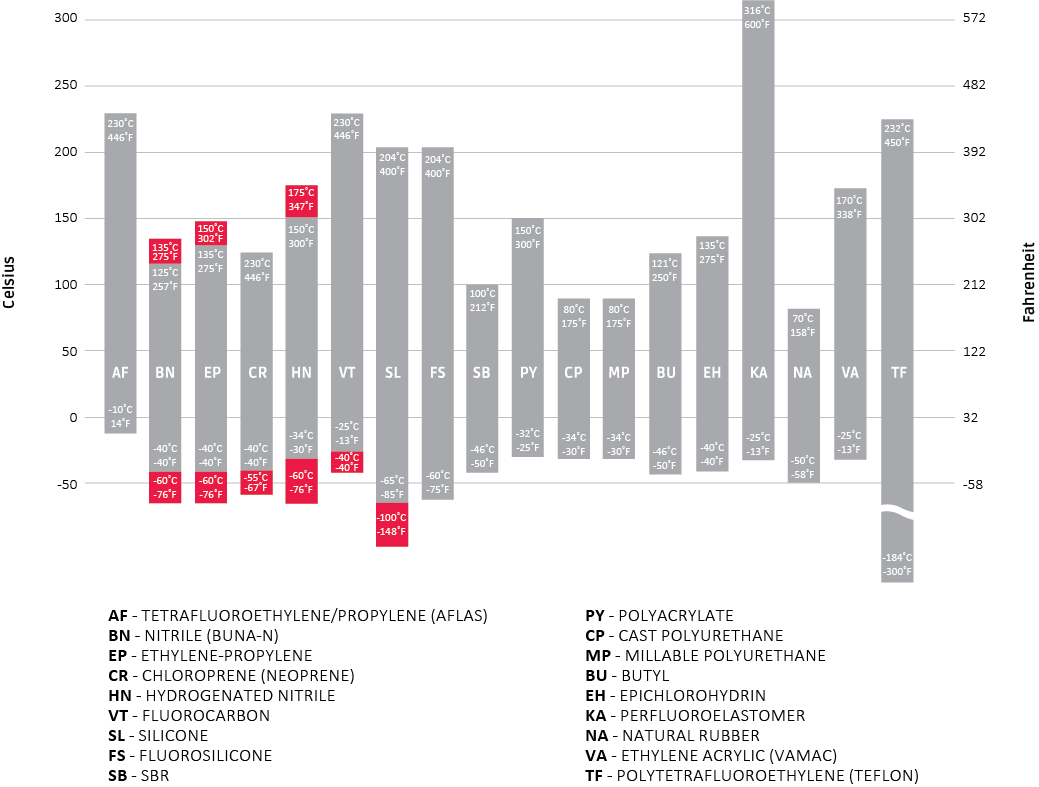Over time, excessive heat degrades o-ring materials physically and/or chemically, which may render them non-functional. Excessive heat is known to cause o-ring materials to both swell and harden, taking a permanent compression set (deformation of shape) within the gland.
Cold temperatures, without proper material selection to resist the effect of extreme cold, results in o-ring shrinkage and possible leakage due to a reduction in surface contact. Extreme cold also affects o-rings by making them brittle and less flexible.
For optimum sealing performance, always attempt to keep the o-ring application within the temperature ranges listed on the individual material data sheets shown in the Material Selection Guide section.
For quick reference, o-ring material working temperature ranges are as shown in Illustration 5.4 below.

This chart refers to the range of temperatures for families of compounds. A specific compound may not have the full temperature range shown. The red bar graph section designates the range provided by special compounds.